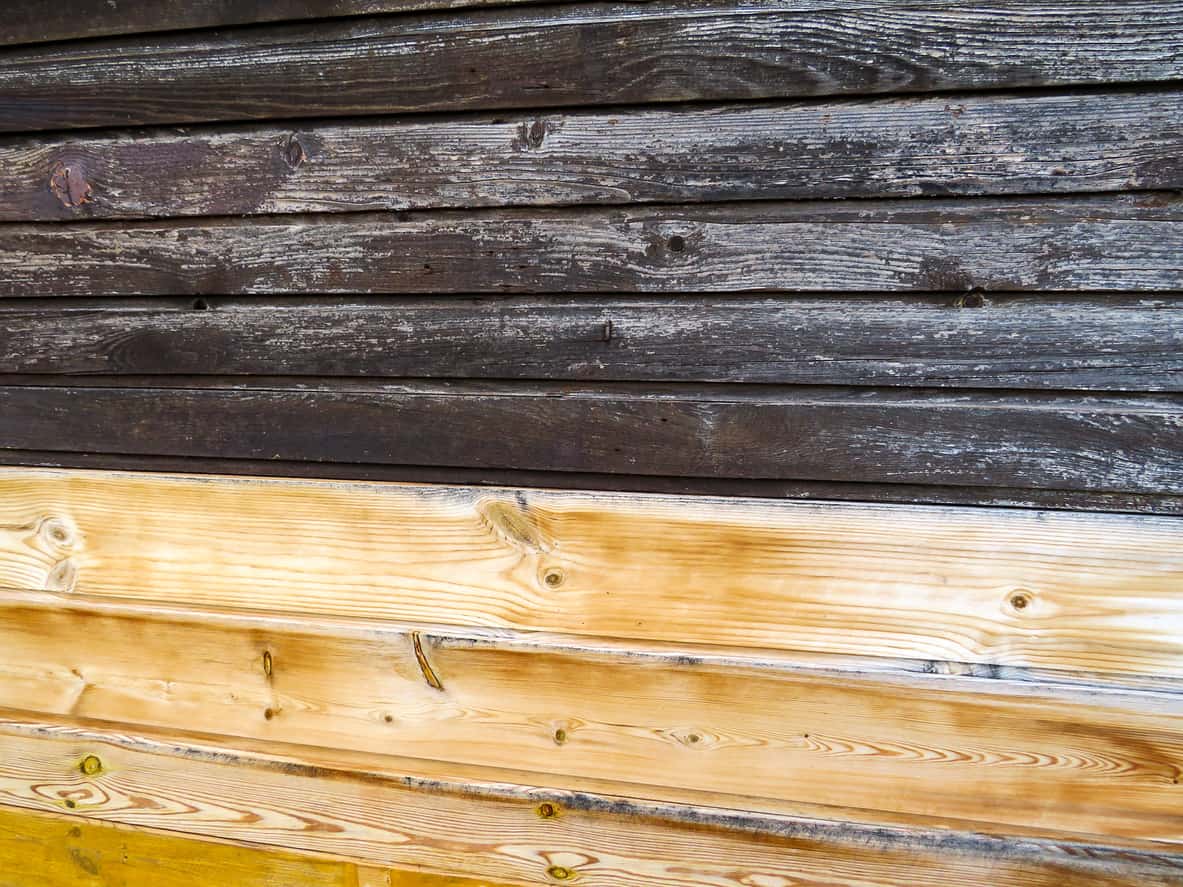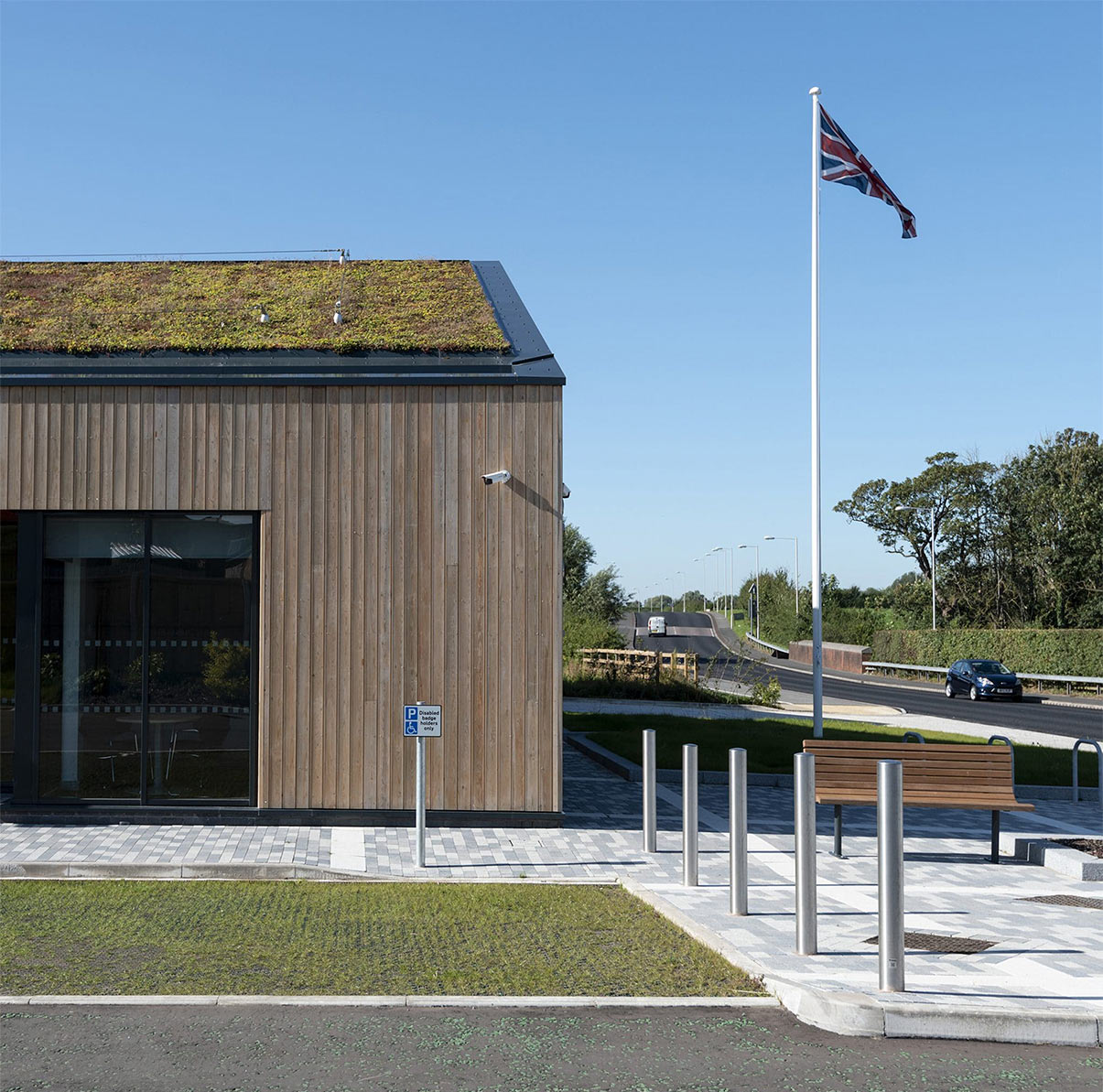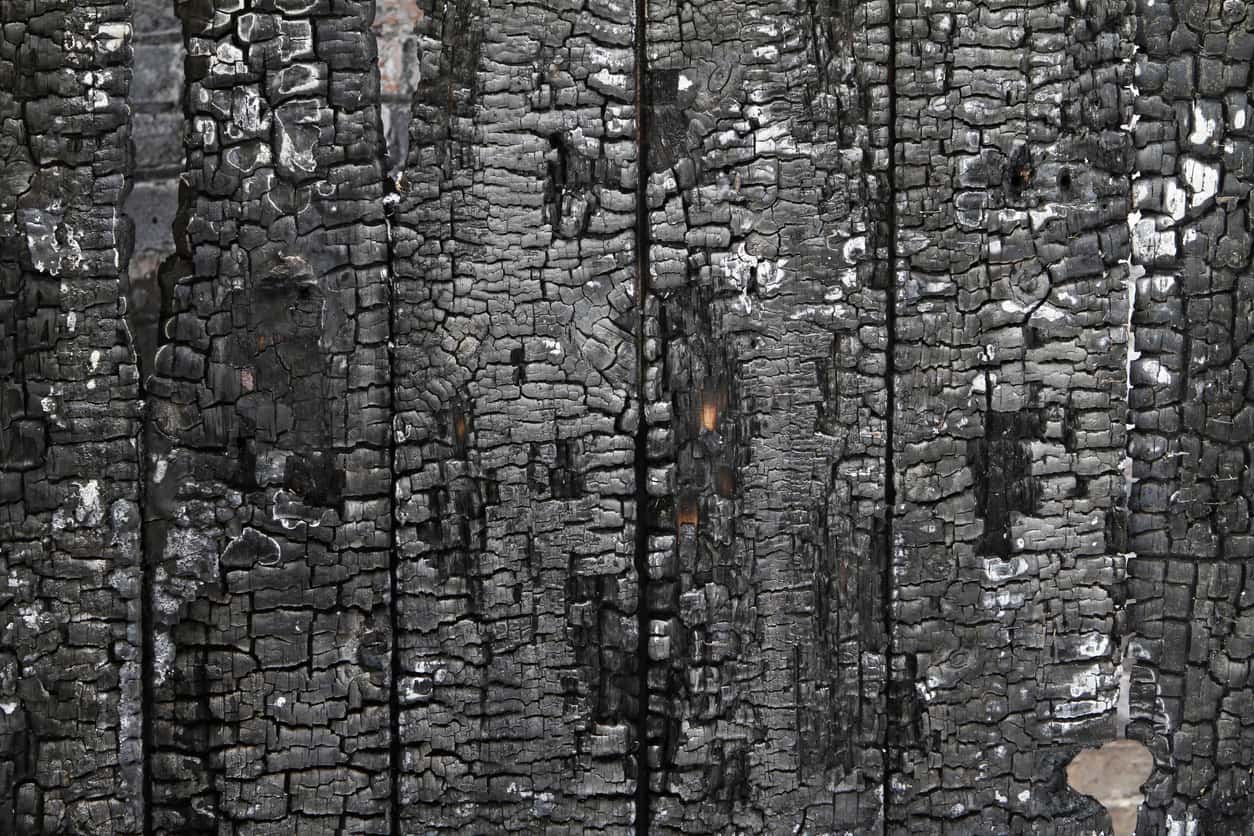The Complete Guide to Timber Cladding Fire Protection
Making sure your building is protected against fire is important for employees, clients, and business owners alike. The timber cladding on your building is no exception to this – wood is commonly thought of as flammable, so what measures are taken to make sure it is protected?
At NORclad, we’ve got the answer. In this article we’ll help you understand what measures are taken to protect cladding against fire and what the timber cladding fire regulations are, giving you the necessary knowledge to feel certain of your timber cladding’s fire resistance.
If you need advice on fire protection for your timber cladding or are interested in a façade for your building, feel free to get in touch.
What Are the Timber Cladding Fire Regulations in the UK?
Keeping up to date with the relevant fire regulations will ensure your timber cladding is up to standard – not only with the legal requirements, but also the level of protection as recommended by authorities on the subject.
Fire Regulations for External Timber Cladding
UK building regulations require that materials used on external walls, either in construction or as cladding, should not be a medium for the spread of fire.
The Fire Safety: Approved Document B outlines what factors need to be considered in terms of materials and arrangement for external timber cladding, helping to reduce the risk of fire spreading vertically or to nearby buildings.
There are also different ‘fire ratings’ in the UK which specify what level of fire resistance a material has and therefore what buildings it is suitable for. This fire rating system, known as Euroclass, is the accepted standard in the UK.
Timber cladding can undergo treatment for Euroclass B categorisation, making it a versatile and compliant material for many applications. There are different requirements for fire protection standards for different types of buildings:
Buildings Under 18m.
These require a rating Euroclass B or higher for external cladding that is within a metre of the property boundary.
Buildings Over 18m.
Buildings of this height need external cladding with a fire rating of Euroclass A, no matter the distance from the boundary. These materials provide little-to-no contribution to fires.
Only buildings with one or more dwellings, institutions, or residential rooms (excluding hotels, hostels, and boarding houses) above the 18-metre mark need to meet these requirements.
Is Timber Cladding a Fire Hazard?
When the exterior surface of wood charrs it forms a protective layer which shields the core of the wood and reduces the rate at which fire spreads, stopping large bodies of wood (such as is used in timber cladding) from quickly catching alight.
This means that timber cladding for external walls should not present an excessive fire risk – however, buildings should still adhere to the relevant fire rating regulations for any external cladding to ensure they are as safe as possible while meeting all legal requirements.
What Fire Rating Does Timber Cladding Need to Meet Regulations?
Untreated wood typically has a fire rating of Euroclass D. This means the cladding must first be treated to be suitable for buildings that require higher fire ratings. At minimum, a fire rating of Euroclass B is required – a rating which is possible with the right treatment.
Find out how to get your timber cladding façade to meet all building regulations by getting in touch.
Can You Fireproof Timber Cladding?
Yes, you can. By treating timber cladding with flame retardant chemicals, its fire rating will drastically improve. This enables wood to be used as external cladding for a large variety of buildings.
Through treatment methods, a Euroclass D rating can be raised to Euroclass B, making it possible for buildings with specific fire safety requirements to make use of the look and sustainability unique to timber cladding.
Due to the nature of wood as a combustible material, its fire rating caps out at Euroclass B; this means that it is impossible to achieve Euroclass A rating, making it unsuitable as a material for buildings over 18-metres that are residential, institutional, or multi-occupancy. However, timber still stands as a versatile material that provides a unique aesthetic to external wall cladding.
Fire Protection Application for Timber Cladding
Timber cladding is given flame retardant treatment to reduce surface spread of fire, heat, and smoke. This provides extra time for evacuation and fire suppression in case of emergency. It also allows the timber to reach a rating Euroclass B, allowing it to adhere to certain building regulations.
The two main methods of applying flame retardant to timber cladding are:
- Impregnation in high-pressure autoclaves.
- Surface application under factory conditions.
By pre-treating wood in factory settings the temperature and humidity can be monitored, the chemical applied correctly, and the necessary coverage can be applied to guarantee the best performance.

How To Protect Your Timber Cladding
By ensuring your timber cladding has the proper protection you’ll keep your building is safe and secure against fire while also making sure it’s in-line with the building regulations lain-out by the government.
There are a couple of options when you’re deciding on how to ensure your timber cladding is protected against fire:
Speak To a Timber Cladding Industry Professional
The best results come from communicating with people who understand the industry. As such, speaking to an industry professional in the easiest and most sure-fire way to get the outcome you need.
It can be challenging to navigate the breadth of information out there and online and due to building and fire protection regulations there isn’t any room for uncertainty.
Industry professionals provide reliable advice bespoke to your specific needs, offering direct consultation on the requirements of your project. This includes information relating to the fire rating you’ll need, routes of access, and the end-use of the building.
Get an expert opinion today by getting in touch with the NORclad team >
Use Industrially Fire Protected Wood for Your Timber Cladding
Treated timber cladding is more reliable and effective than wood that needs to be treated on-site, giving marked improvements in durability, fire protection, and ease of application.
Timber typically requires a certain level of fire protective capability, as indicated by its fire rating, before it’s allowed to be used on an exterior façade. Euroclass B treated materials offer a low hazard towards fire, giving you peace of mind for your building’s fire protection.
Sourcing pre-treated wood also comes with the added benefit of reduced time and man-power on-site, factors which are also impacted by the weather conditions and access points which must be considered both in building work and when treating timber outside of factory conditions.
Sourcing pre-treated wood also removes the time and manpower needed to apply fire protection on-site, allowing your building work to get underway without any hassle.
Find out more about the different kinds of treatment offered by NORclad >

The Different Types of Fire Protection Treatment for Timber Cladding
At NORclad, we work closely with architects, planners, contractors, and specifiers to create NBS Specifications for timber cladding, offering up to date advice and guidance on industry regulations and best practices.
Get started by receiving an NBS Source Partner specification from us >
There are two main ways in which timber cladding is treated to improve its fire rating, along with a third method that comes with a number of disadvantages when compared to the more commonly regarded processes.
1. Factory Spray & Brush Applied Fire Treatment for Timber Cladding
This type of treatment works by utilising factory-controlled systems, moving the timber through an audited and optimised Spray & Brush line. By keeping the timber in the factory for its treatment, it is given the best overall coverage with results that can be monitored and adjusted if needed. During this labour-intensive process, every board going through the line will end up with a consistent application of fire treatment to all faces.
Due to the nature of the chemicals used and the intensity of the treatment, Spray & Brush fire treatment for timber cladding results in an end-product that is designed to last for the life of the building, with no further maintenance required.
We’ve also ensured our Spray & Brush treatment is compatible alongside our NORclad Lite and NORclad Brunnea preservative treatments, helping to ensure your building’s façade looks the way you want for decades to come.
2. Pressure Impregnated Fire Treatment
By combining high-pressure fire protection impregnation with heat curing under controlled conditions, timber can receive fire treatment that is designed to last. Depending on the type of wood involved, this treatment can be preferable to factory-controlled Spray & Brush.
This method results in consistent fire protection within the treated materials but may result in waste elements that must be considered when looking at volumes for your project. Get in touch to figure out exactly how this could affect you.
3. Can I Apply Timber Cladding Fire Protection On-Site?
On-site fire protection application is the practice of applying treatment to timber cladding outside of factory conditions – typically on the site itself. However, it is not recommended, and applying timber cladding fire protection on-site is likely give a poor-quality result when compared to wood treated under factory conditions.
Pressure Impregnation. This method of fire protecting your timber cladding is hard to pull off on-site as attempting it outside of factory conditions comes with a number of disadvantages, including a lack of control over variables such as humidity and consistency, resulting in an inferior product.
Dipping. Another method of on-site fire treatment is called ‘dipping’. This process involves placing packs of timber into a vat of fire treatment solution, leaving it to dry, and repeating the process as required. Again, as with on-site pressure impregnation, dipping results in a worse end-product due to the lack of careful control and application techniques possible in a factory environment.
With both of these methods there will be greater inconsistency across all pieces of wood, resulting in an uneven level of protection. It is also possible that they will not be properly protected at all.
We tested some cladding which had undergone dipping during a scenario at Warrington Fire, with the constructed panels only achieving results comparable to a Euroclass D rating – the same as untreated wood.
Make sure you’re getting the best fire protection treatment for your timber – contact us today.
Timber Cladding Fire Protection Solutions from NORclad
Make sure your façade is up to standard and in accordance with building regulations to give you the greatest levels of protection against fire. Euroclass B treated wood provides all the sustainability, versatility, and aesthetical benefits of a timber cladding façade while meeting the fire protection requirements for many different categories of building.
Timber from NORclad has been treated under strict factory conditions with the treatment type most appropriate to the type of wood used, allowing for a comprehensive and consistent level of fire protection.
Get in touch to make a start on your next project, browse our range of timber cladding products, ask for a quote, or read on with some related articles.
Find out about Thermowood with our ultimate guide >
Learn the impact that timber cladding can have on a building’s performance and durability >


















